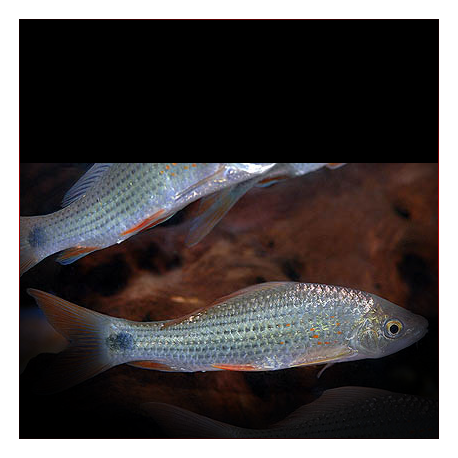More info
Datasheet
| Minimum Tank Size | 680 litres / 179.64 US gallons |
| Maximum Size | 32.0cm / 12.60inches |
| Temperature | 22°C / 71.60°F - 25°C / 77.00°F |
| Hardness | 5-12ºdH |
| pH | 6.0-8.0 |
General Description
The Hard-Lipped Barb, scientifically known as Osteochilus Hasseltii, is part of the Cyprinidae family and can grow up to 32.0cm in size. This species is characterized by its lack of a dorsal fin spine, presence of 11-18 dorsal fin rays, large rostral and maxillary barbels, papillae on both upper and lower lips, and darkened median fins.
Aquarium Setup
When setting up an aquarium for the Hard-Lipped Barb, it is essential to provide a dimly-lit environment with a soft, sandy substrate to mimic its natural habitat. Adding driftwood for shady spots and plants like Microsorum pteropus and Cryptocorynes, which can withstand its feeding behavior, are recommended. Floating vegetation is also beneficial to diffuse light and create a more natural feel. The water conditions should have a hardness of 5-12°dH, pH of 6.0-8.0, and a temperature range of 22-25°C.
Behaviour
Despite its adult size, the Hard-Lipped Barb is quite shy and tends to be outcompeted for food by more aggressive species in the aquarium. It is a gregarious species that forms a pecking order within a shoal, emphasizing the importance of keeping it in groups of five or more to prevent bullying behavior. Solitary specimens can display aggressiveness towards similar-looking species, highlighting the need for appropriate tankmates.
Feeding and Diet
As an omnivore, the Hard-Lipped Barb feeds on small items like zooplankton, phytoplankton, aquatic invertebrates, and detritus. In an aquarium, it will browse plant leaves for aufwuchs and algae or search for food in the substrate. This species rarely feeds at the surface and should be offered fine-grade pelleted sinking foods supplemented with small live or frozen foods like bloodworms, Daphnia, or Artemia.
Reproduction & Dimorphism
There is limited information on the reproduction of the Hard-Lipped Barb in aquarium settings. Sexually mature females are likely to be thicker-bodied than males, but further details on dimorphism are not extensively documented.
Habitat and Distribution
The Hard-Lipped Barb mainly inhabits slow-moving tributaries and large streams with soft substrates, where it burrows for food. During the rainy season, it migrates to flooded forest areas for feeding and spawning, returning to smaller tributaries afterward. This species has a vast distribution range covering Myanmar, Thailand, Vietnam, Malaysia, and various islands. It can adapt to still or permanent water bodies due to human activities like damming rivers.

